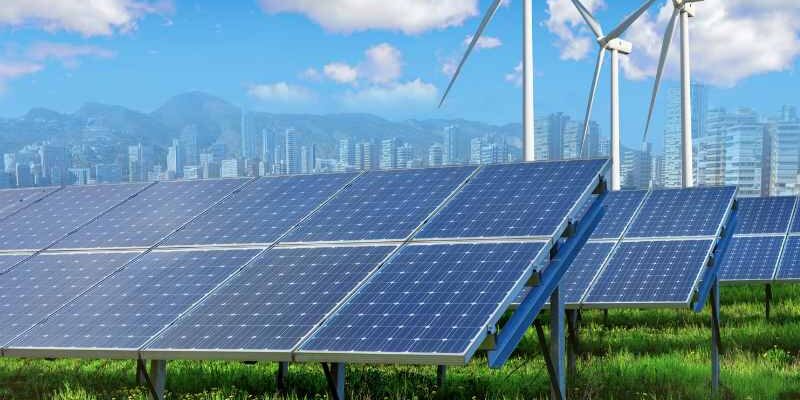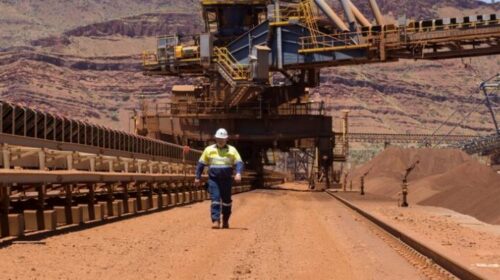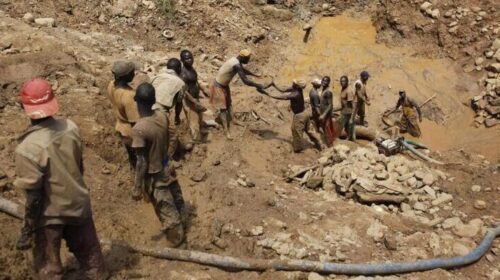B2Gold’s Sustainability Director stresses Responsibility to tackle Climate impacts
For organizations to continue to thrive against the backdrop of climate change, they are charged with reducing their environmental footprint while ensuring operations can withstand the impact of a changing climate.
This imperative inspired senior gold producer B2Gold Corp. to embark on an ambitious decarbonization pathway.
“At B2Gold, we recognize that climate change is one of the most critical challenges of our time, not just for our business but for society,” says Ken Jones, director of sustainability. “We have a responsibility to do our part and manage our potential impacts as well as manage climate impacts on B2Gold.”
In the quest to reduce greenhouse gas emissions, B2Gold has turned to renewable energy solutions. The impressive results so far have enabled the company to set the goal of reducing its scope 1 and 2 emissions by 30 per cent by 2030 from a 2021 baseline.
“That’s a very strong commitment that is in line with government and industry targets – and this will allow us to make a big step towards a low-carbon future,” says Mr. Jones. “For us, it is important that these kinds of commitments are achievable – and that they are based in operational realities and available technologies.”
What gives B2Gold the confidence to reach this emissions reduction target is its longstanding commitment to managing its climate risks and continuous improvement in its climate performance, says Mr. Jones.
“Since we started issuing annual reports on greenhouse gas emissions in 2016, we have expanded our reporting significantly to accurately capture and understand our carbon footprint. Last year, we reported on our scope 1, 2 and 3 emissions.”
According to the Greenhouse Gas Protocol, greenhouse gas emissions are categorized into three groups, where scope 1 covers direct emissions from owned or controlled sources, while scope 2 includes indirect emissions from the generation of energy purchased by the company. Scope 3 encompasses all other indirect emissions that occur in the entire value chain.
One measure that has made a big difference for B2Gold was bringing a significant percentage of solar power into the energy mix: operations at the Otjikoto mine in Namibia and the Fekola mine in Mali both maintain fully autonomous hybrid power plants consisting of 6 megawatt and 30 megawatt solar-installed capacity, respectively.
Beyond increasing the percentage of renewable energy, the Otjikoto facility also represents a landmark project in sustainable power generation as the hybrid solar, fully autonomous system is the first of its type in Africa, according to Mr. Jones. “We’ve been pioneering an innovative use of renewables in our operations.”
We made a commitment to not only manage our climate risk for the company, but to also keep all stakeholders informed of our performance, including shareholders, government and society.
Last year, B2Gold’s operation generated 15 per cent of its electricity from renewable sources. This number is projected to increase to approximately 20 per cent in 2023, taking the company closer to the 30 per cent emissions reduction goal, says Mr. Jones. “Currently, we are primarily focused on decarbonizing our electricity supply, but going forward, we will also explore technologies that can help us reduce emissions in our mine fleet and the rest of our operations.”
Measures under investigation include building wind energy capacity, using LNG as a bridge fuel, emerging energy storage technologies and hydrogen fuels, as well as electrifying the movement of mine materials through overland conveyance or trolley-assisted haulage systems, he adds.
Underpinning these steps is a dedication to incorporate climate risk management into all business decisions, says Mr. Jones. “In 2022, we issued our first climate strategy report, which aligns with the recommendations of the Task Force on Climate-Related Financial Disclosures.
“We made a commitment to not only manage our climate risk for the company but to also keep all stakeholders informed of our performance, including shareholders, government and society.”
For B2Gold, environmental impact considerations are embedded in the firm’s environmental, social and governance goals – and the commitment to “achieving and maintaining our social licence,” says Mr. Jones. “It’s our priority to make a positive contribution to our host communities and host countries.”
In addition to reducing emissions, this includes reclaiming and restoring disturbed areas, collaborating on water solutions and making a contribution to social and economic well-being, he adds.
“All this is received quite favorably. It shows our stakeholders that yes, we care about the environment and are committed to creating long-term value for communities.”
![]()





